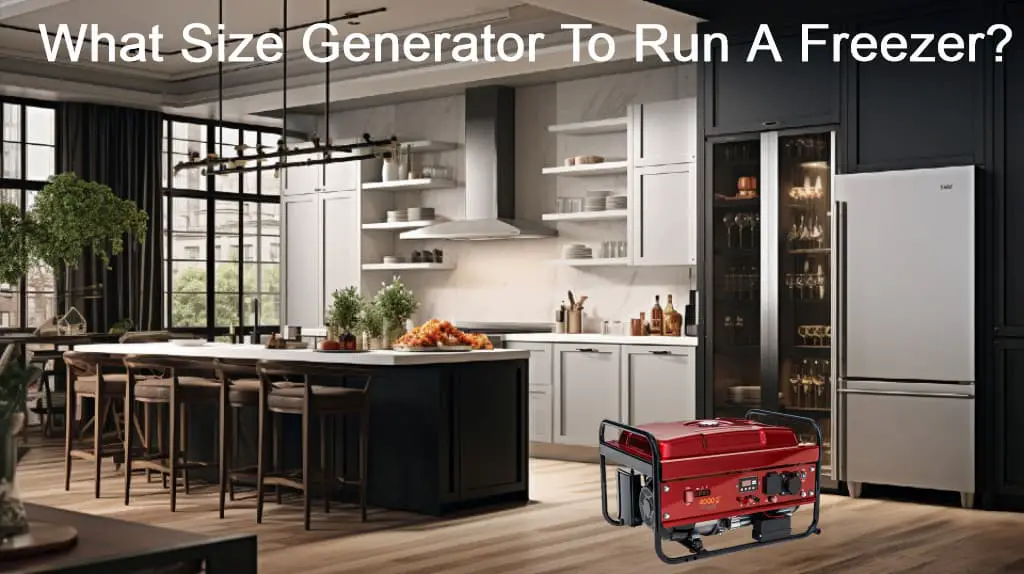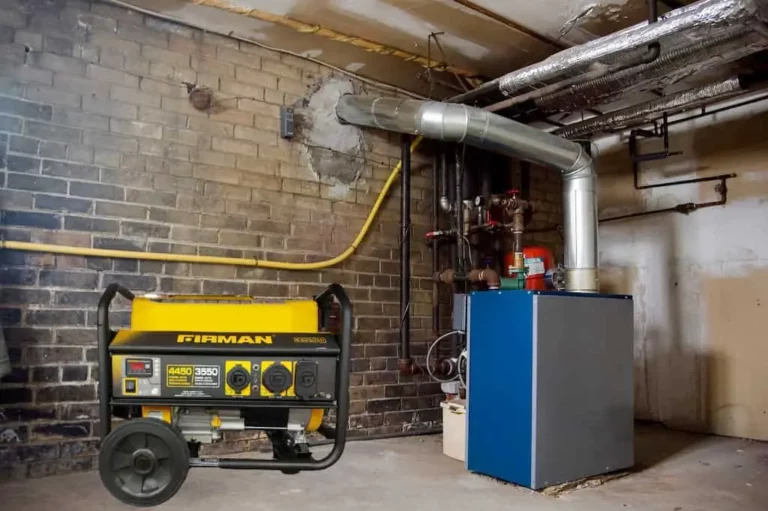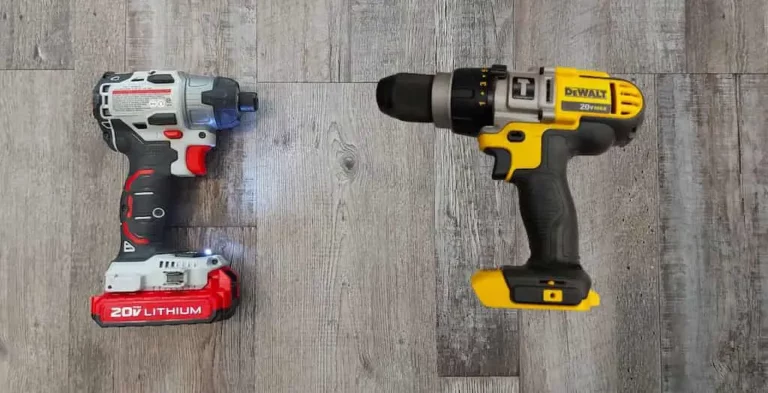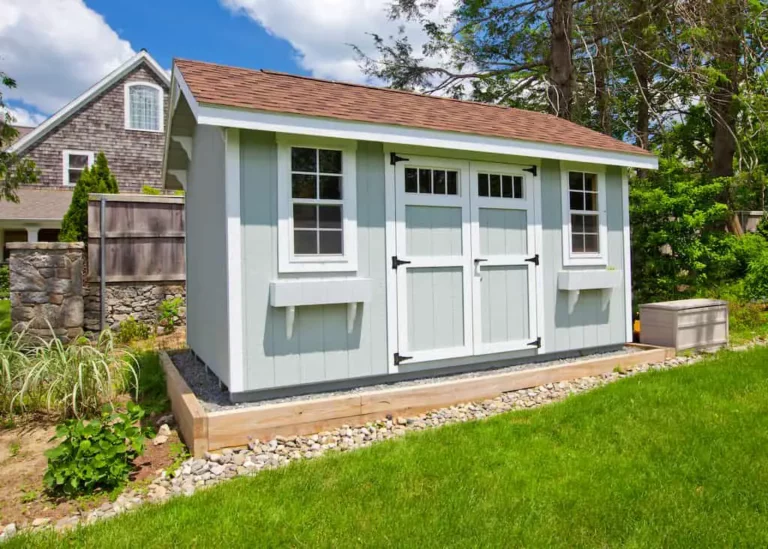What Size Generator To Run A Freezer?

In most modern households, the reliance on electrical appliances has expanded to the point where the thought of a prolonged power outage is daunting, primarily due to the potential of significant economic loss and food safety concerns.
Cooling equipment, such as freezers and fridges, are critical and must remain running. To ensure continuous operation during power outages it is essential to choose the right size generator, which will depend on both the starting (surge) and running (operational) wattages of the freezer.
Many homeowners consider investing in generators as backup power source to prevent spoilage. Consequently, a comprehensive understanding of the energy requirements of a freezer becomes essential, particularly when selecting a backup power solution.
What Size Generator to Run a Refrigerator?
Refrigerators, like freezers, are essential household appliances that homeowners must keep running during power outages to prevent the foodstuffs from going off.
The wattage required varies depending on the size and model. Here’s a general guideline:
Small Refrigerator
A typical small refrigerator, such as those found in college dorm rooms or offices, usually requires between 100-200 running watts, with starting (surge) watts ranging from 600-1200 watts.
Standard Refrigerator
A standard home refrigerator usually requires about 150-200 running watts. The required starting watts can spike between 800 and 1200 or more.
Refrigerator-Freezer Combo
For combined units, you’ll need to consider both components’ wattages. Generally, expect about 400-800 running watts and starting watts between 1200-2500.
Always check the appliance’s manual or data plate for exact wattage requirements for safety. But in general, to run just a refrigerator, a generator with a capacity of at least 2500 watts is recommended to handle the initial surge.
What Size Generator to Run Central Air?
Central air conditioning systems have become a staple in many homes, ensuring comfort during sweltering summers. These systems, however, demand a significant amount of power, especially upon startup.
Small Central Air (up to 2 tons)
For smaller systems, you typically need about 1500-3000 running watts. However, starting watts can be as high as 5000-7500 watts.
Medium Central Air (3-4 tons)
A medium-sized unit generally requires 3000-5000 running watts. Starting watts spike between 9000-12000 watts.
Large Central Air (5 tons and above)
These units require around 5000-7000 running watts, with starting wattage needs up to 15000-20000 watts.
Given the high starting wattage for central air units, homeowners aiming to power their A/C during an outage should consider a generator with at least a 20,000-watt capacity.
Read my article Can A Generator Run A Gas Furnace?
Determining the Right Generator Size for a Freezer
Freezersgenerally have lower power requirements than refrigerators. However, like other appliances, they still have a surge in power during startup.
Chest Freezer
A standard chest freezer may require 500-800 running watts, with around 1000-1600 starting watts.
Upright Freezer
Upright models tend to consume 600-900 running watts, with starting watts peaking around 1200-1800.
To run a standalone freezer, a generator with a minimum of 2000 watts should suffice for most household models. This accounts for the starting wattage and other small devices you might need to power simultaneously.
What Happens If You Connect Multiple Devices To The Generator?
As the thermostat records the temperature has risen, the compressor starts. When the temperature has cooled, the compressor starts. This cycle will be repeated continuously while the unit is running.
The load placed on the generator is cumulative. This means that the generator must be able to power all the devices simultaneously.
In particular, the generator needs to have sufficient capacity to manage each device’s startup (surge) power requirements. Remember that the compressors used in refrigerators, freezers, and air conditioners start and stop multiple times during a cycle.
What Are Starting Watts
We have repeatedly use the term starting watts during this article. Starting watts (starting or surge power) are the value of the power that is needed to start an induction motor.
All refrigerators and similar devices use induction motors as compressors in the device.
To start operating an induction motor requires a few seconds of “starting watts” to begin operating. The reasons for this are as follows.
Initial Static Friction
When the motor is at rest, it must overcome the mechanical components’ static friction, like the bearings and other connected loads.
This requires a higher initial force, translating to higher electrical power.
Magnetic Field Creation
Induction motors operate by creating a rotating magnetic field in the stator (the stationary part of the motor). This field then induces a current in the rotor (the rotating part), causing it to turn.
When the motor starts, the rotor is stationary, so the relative difference in speed between the rotor and the magnetic field is at its maximum. This results in a large, induced current in the rotor, hence a high initial power requirement.
As the rotor speeds up, this difference in speed decreases, and so does the induced current and power consumption.
Lack of Back-EMF at Startup
Once an induction motor runs, it generates a counter-electromotive force (Back-EMF) that opposes the supply voltage. This Back-EMF helps limit the current drawn by the motor.
This Back-EMF is absent (or minimal) when starting, so the motor draws a significantly larger current, requiring more power.
The Load Inertia
If the induction motor is connected to a load (like a compressor), the motor must provide enough torque to overcome not just its own inertia but also the inertia of the connected load.
Starting these systems requires a higher amount of torque and power.
Locked-Rotor Condition
When an induction motor starts, it is often considered to be in a “locked-rotor” condition since the rotor isn’t moving. In this state, the motor draws the highest current, sometimes 5 to 7 times (or more) its rated full-load current.
Given these reasons, it’s essential that the electrical systems that power s induction motors need to have a surge capability that is 2 to 3 times higher than the normal consumption.
For instance, motors in appliances like freezers, refrigerators, and air conditioners need a surge of energy to start up and then level off to their regular running wattage once operational.
When sizing a generator, one must account for this initial surge in power demand.
Conclusion
Choosing the right generator involves considering all potential appliances you may want to power during an outage. By understanding each device’s running and starting watts, you can select a generator capable of handling your household’s energy needs.
Remember, it’s always wise to overshoot your estimated needs slightly to ensure your generator can handle unforeseen power demands and to extend the lifespan of your generator by not constantly operating it at its maximum capacity.





